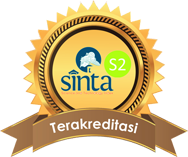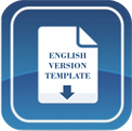The Effect of Triangulation-Based Metacognitive Learning Strategy on Students' Chemistry Literacy and Learning Achievement
DOI:
https://doi.org/10.15575/jtk.v7i1.14811Keywords:
chemistry literacy, electrolyte and nonelectrolyte solutions, learning achievement, metacognitive learning strategy, triangulationAbstract
This study aimed to investigate the effect of triangulation-based metacognitive learning strategy on students’ chemistry literacy and learning achievement. This study was conducted by using a pretest-posttest control group design. The participants of this research were two classes of 10th grade natural science students of Senior High School in Pasuruan, Indonesia. One class was taught using triangulation-based metacognitive learning strategies consisting of four steps (Preparing, Doing, Checking, and Assessing & Following-Up) abbreviated to MLS-PDCA, and another was taught using expository learning strategy (ELS). Data was collected by pretest and posttest. Based on the data analysis, it was known that the N-gain averages of students’ chemistry literacy were 54% in MLS-PDCA class as the middle category and 38% in the ELS class as middle category. N-gain averages of learning achievement were 56% in experiment class as middle category and 40% in ELS as middle category. Mann Whitney U and independent sample t-test showed that the improvement of students’ chemistry literacy and learning achievement in MLS-PDCA class was more significant than in the ELS class. It can be concluded that MLS-PDCA can enhance the students’ chemistry literacy and learning achievement in senior high school.
References
Adadan, E., & Savasci, F. (2012). An analysis of 16-17-year-old students’ understanding of solution chemistry concepts using a two-tier diagnostic instrument. International Journal of Science Education, 34(4), 513–544. https://doi.org/10.1080/09500693.2011.636084
Affandi, Y., Abdurrahman, A., & Suana, W. (2015). Pengaruh Self Regulated Learning Siswa Terhadap Literasi Sains Melalui Pembelajaran Inkuiri Terbimbing. Jurnal Pembelajaran Fisika Universitas Lampung, 3(2), 120535. Retrieved from http://jurnal.fkip.unila.ac.id/index.php/JPF/article/view/8469
Amin, A., Corebima, A. D., Zubaidah, S., & Mahanall, S. (2019). The Correlation between Metacognitive Skills and Critical Thinking Skills at the Implementation of Four Different Learning Strategies in Animal Physiology Lectures. European Journal of Educational Research, 9(1), 143–163. https://doi.org/10.12973/eu-jer.9.1.143
Anggraeni, A. Y., & Wardani, S. (2020). Profil Peningkatan Kemampuan Literasi Kimia Siswa Melalui Pembelajaran Inkuiri Terbimbing Berbasis Kontekstual. Jurnal Inovasi Pendidikan Kimia, 14(1), 2512–2523. Retrieved from https://journal.unnes.ac.id/nju/index.php/JIPK/article/view/18979
Aslamiah, A., Abbas, E. W., & Mutiani, M. (2021). 21st-Century Skills and Social Studies Education. The Innovation of Social Studies Journal, 2(2), 82. https://doi.org/10.20527/iis.v2i2.3066
Bahri, A., & Corebima, A. D. (2015). The contribution of learning motivation and metacognitive skill on cognitive learning outcome of students within different learning strategies. Journal of Baltic Science Education, 14(4), 487-500. Retrieved from http://eprints.unm.ac.id/11457/
Baptista, M., Martins, I., Conceição, T., & Reis, P. (2019). Multiple representations in the development of students’ cognitive structures about the saponification reaction. Chemistry Education Research and Practice, 20(4), 760-771. https://doi.org/10.1039/C9RP00018F
Chen, C. W., & Osman, C. (2017). Cultivating Marginalized Children’s Scientific Literacy in Facing the Challenges of the 21st Century. K-12 STEM Education, 3(1), 157–167. Retrieved from https://www.learntechlib.org/p/209550/
Cigdemoglu, C., & Geban, O. (2015). Improving students’ chemical literacy levels on thermochemical and thermodynamics concepts through a context-based approach. Chemistry Education Research and Practice, 16(2), 302-317. https://doi.org/10.1039/C5RP00007F
Cook, E., Kennedy, E., & McGuire, S. Y. (2013). Effect of teaching metacognitive learning strategies on performance in general chemistry courses. Journal of Chemical Education, 90(8), 961–967. https://doi.org/10.1021/ed300686h
Creswell, J. W. (2012). Educational research: Planning. conducting. and evaluating quantitative and qualitative research. Boston: Pearson.
Dori, Y. J., Avargil, S., Kohen, Z., & Saar, L. (2018). Context-based learning and metacognitive prompts for enhancing scientific text comprehension. International Journal of Science Education, 40(10), 1198–1220. https://doi.org/10.1080/09500693.2018.1470351
Genc, M. (2015). The effect of scientific studies on students’ scientific literacy and attitude. Ondokuz Mayis University Journal of Education Faculty, 34(1), 141-152. Retrieved from https://dergipark.org.tr/en/pub/omuefd/issue/20280/215035
Gkitzia, V., Salta, K., & Tzougraki, C. (2020). Students’ competence in translating between different types of chemical representations. Chemistry Education Research and Practice, 21(1), 307-330. https://doi.org/10.1039/C8RP00301G
Hake, R. R. (1998). Interactive-engagement versus traditional methods. American Journal of Physics, 66, 64–74. https://doi.org/10.1119/1.18809
Hammond, L. D., Austin, K., Cheung, M., & Martin, D. (2014). Session 9: Thinking About Thinking: Metacognition. Stanford University School of Education.
Ijirana, & Supriadi. (2018). Metacognitive skill profiles of chemistry education students in solving problem at low ability level. Jurnal Pendidikan IPA Indonesia, 7(2), 239–245. https://doi.org/10.15294/jpii.v7i2.14266
Jayapraba, A. P. D. G. (2013). Metacognitive Instruction And Cooperative Learning- Strategies For Promoting Insighful Learning In Science. International Journal on New Trends in Education and Their Implications, 4(1), 165-172. Retrieved from http://www.ijonte.org/FileUpload/ks63207/File/15.jayapraba.pdf
Kallio, H., Virta, K., & Kallio, M. (2018). Modelling the components of metacognitive awareness. International Journal of Educational Psychology, 7(2), 94-122. https://doi.org/10.17583/ijep.2018.2789
Lavi, R., Shwartz, G., & Judy, Y. (2019). Metacognition in Chemistry Education : A Literature Review. 583–597. https://doi.org/10.1002/ijch.201800087
Lu, S., Bi, H., & Liu, X. (2019). A phenomenographic study of 10th grade students’ understanding of electrolytes. Chemistry Education Research and Practice, 20(1), 204–212. https://doi.org/10.1039/C8RP00125A
OECD. (2016). PISA 2015 Results (Volume I): Excellence and Equity in Education. Paris: OECD Publishing.
Parlan, Ibnu, S., Rahayu, S., & Suharti. (2018a). The Improvement of Metacognition of Chemistry Education Students using Metacognitive Learning Strategy. Social Science, Education and Humanities Research, 218, 269–278. https://doi.org/10.2991/icomse-17.2018.46
Parlan, P., Ibnu, S., Rahayu, S., & Suharti, S. (2018b). Effects of the metacognitive learning strategy on the quality of prospective chemistry teacher’s scientific explanations. International Journal of Instruction, 11(4), 673–688. Retrieved from https://eric.ed.gov/?id=EJ1191723
Rahayu, S., & Kita, M. (2010). An Analysis of Indonesian and Japanese Students’ Understandings of Macroscopic and Submicroscopic Levels of Representing Matter and its Changes. International Journal of Science and Mathematics Education, 8(4), 667–688. https://doi.org/10.1007/s10763-009-9180-0
Rubini, B., Ardianto, D., Pursitasari, I. D., & Permana, I. (2016). Identify scientific literacy from the science teachers’ perspective. Jurnal Pendidikan IPA Indonesia, 5(2), 299–303. Retrieved from https://journal.unnes.ac.id/nju/index.php/jpii/article/view/7689
Sastri, Y., Suryawati, E., & Hatta, M. (2020). The Use of Flip Chart as a Tool to Strengthen Scientific Literacy at Junior High School Student. In Proceeding Biology Education Conference: Biology, Science, Enviromental, and Learning, 17(1), 91-97, Surakarta: Universitas Sebelas Maret. Retrieved from https://jurnal.uns.ac.id/prosbi/article/view/54045
Schleicher, A. (2019). PISA 2018: Insights and Interpretations. Paris: OECD Publishing.
Shwartz, Y., Ben-Zvi, R., & Hofstein, A. (2006). Chemical literacy: What does this mean to scientists and school teachers? Journal of Chemical Education, 83(10), 1557–1561. https://doi.org/10.1021/ed083p1557
Sukowati, D., Rusilowati, A., & Sugianto. (2017). Analisis Kemampuan Literasi Sains Dan Metakogntif Peserta Didik. Physics Communication, 1(1), 16–22. Retrieved from https://journal.unnes.ac.id/nju/index.php/pc/article/view/8961/0
Sunyono, S., & Meristin, A. (2018). The effect of multiple representation-based learning (MRL) to increase students’ understanding of chemical bonding concepts. Jurnal Pendidikan IPA Indonesia, 7(4), 399–406. https://doi.org/10.15294/jpii.v7i4.16219
Thomas, G. P. (2017). “Triangulation:†an expression for stimulating metacognitive reflection regarding the use of “triplet†representations for chemistry learning. Chemistry Education Research and Practice, 18(4), 533–548. https://doi.org/10.1039/C6RP00227G
Treagust, D., Chittleborough, G., & Mamiala, T. (2003). The role of submicroscopic and symbolic representations in chemical explanations. International journal of science education, 25(11), 1353-1368. https://doi.org/10.1080/0950069032000070306
Treagust, D., Nieswandt, M., & Duit, R. (2018). Sources of students difficulties in learning Chemistry. Educación QuÃmica, 11(2), 228. http://doi.org/10.22201/fq.18708404e.2000.2.66458
Upahi, J. E., & Ramnarain, U. (2019). Representations of chemical phenomena in secondary school chemistry textbooks. Chemistry Education Research and Practice, 20(1), 146-159. https://doi.org/10.1039/C8RP00191J
Widarti, H. R., Marfu’ah, S., & Parlan. (2019). The Effects of Using Multiple Representations on Prospective Teachers’ Conceptual Understanding of Intermolecular Forces. Journal of Physics: Conference Series, 1227(1). https://doi.org/10.1088/1742-6596/1227/1/012006
Young, A., & Fry, J. D. (2008). Metacognitive awareness and academic achievement in college students. Journal of the Scholarship of Teaching and Learning, 8(2), 1-10. Retrieved from https://eric.ed.gov/?id=EJ854832
Downloads
Published
How to Cite
Issue
Section
Citation Check
License
Authors who publish with this journal agree to the following terms:
- Authors retain copyright and grant the journal right of first publication with the work simultaneously licensed under a Creative Commons Attribution-ShareAlike that allows others to share the work with an acknowledgement of the work's authorship and initial publication in this journal.
- Authors are able to enter into separate, additional contractual arrangements for the non-exclusive distribution of the journal's published version of the work (e.g., post it to an institutional repository or publish it in a book), with an acknowledgement of its initial publication in this journal.
- Authors are permitted and encouraged to post their work online (e.g., in institutional repositories or on their website) prior to and during the submission process, as it can lead to productive exchanges, as well as earlier and greater citation of published work (See The Effect of Open Access).








